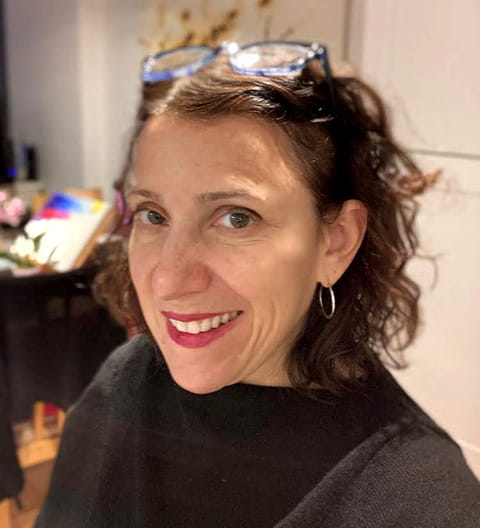Spirited New York City Stroke Survivor Thrives and Redefines Her Life Living with Spasticity
 Yvonne Honigsberg was running on the treadmill at her gym when she tried to say something to the woman next to her. What came out of her mouth was “gobbledygook,” she said. Then she collapsed.
Yvonne Honigsberg was running on the treadmill at her gym when she tried to say something to the woman next to her. What came out of her mouth was “gobbledygook,” she said. Then she collapsed.
Two women called 911, comforting her while they waited for the ambulance to arrive. They asked her if she understood what they were saying, but she couldn’t speak. She couldn’t even nod her head. She could, however, blink when they asked her to.
“As I blinked, tears ran down my cheeks,” she said. “I knew I was having a stroke.”
Indeed, Honigsberg, an editor in clinical medicine, had been working on a book by a renowned neurologist about recovering from stroke and recognized her symptoms.
Honigsberg woke up three weeks later in the ICU. She had suffered a hemorrhagic stroke, or a bleed in her brain. To release the pressure on her brain, doctors had temporarily removed part of her skull. It was months before she learned exactly what the surgery entailed.
For the first four months, she couldn’t speak, walk or use her right hand, which was curled up in a ball. Her rehabilitation team diagnosed her with spasticity, which can impact movement, causing discomfort and/or pain.
While she lost the use of her right arm and sometimes experiences slight discomfort in her right leg and tightness in her right hip, she slowly regained the ability to walk and talk with the help of in-person rehab.
Although she learned how to get by using her left arm, Honigsberg could not even extend her fingers on her right. As a result, her fingernails dug into her palm, and she struggled to put on her arm brace. For years, she worked with a private occupational therapist.
Her doctors also prescribed targeted injections of botulinum toxin to relieve tight muscles in her hand, treating her with the drug every six months. Although it loosened her fingers, it eventually stopped working. Testing revealed that she had developed antibodies to the drug.
Honigsberg’s doctors attempted several alternatives, including muscle relaxers and electro muscle stimulation, but nothing provided lasting relief. “It was a struggle every day,” she said.
A few years ago, she had surgery to cut the tendons in her right hand, which freed her formerly clenched fingers. While she still can’t use her right arm, she makes do.
She wears shoes with elastic so she doesn’t struggle with shoelaces. A rubber non-slip mat helps her to prepare meals without the bowls moving around. And she discovered if she doesn’t snap her bra, she can put it on over her head like a T-shirt.
Her speech has also improved, although she still sometimes struggles to find the right word.
“That has been disappointing, but on the other hand, I've done things that I never thought possible.”
About nine months after her stroke, Honigsberg began to have seizures. One of the side effects of the medication that doctors prescribed was depression. Although she’d hoped to return to work one day, she realized at that point that it wasn’t likely.
“It felt like it would never end,” she said. Doctors prescribed a different medication, and slowly, her spirits lifted.
Determined to remain vital and engaged, she joined an aphasia storytelling group and eventually became a storytelling coach. In addition, she writes a newsletter for a breast cancer organization and tutors immigrants in English as a Second Language (ESL) group. Speaking slowly and emphasizing her words helps her to improve her speech, and it allows her students to better understand her.
She also joined a drama group for people with speech problems and participates in community theaters at a local church.
“I was the only disabled person, but I figured, ‘Why not?’,” she said. “I had to reorient my purpose and live each moment fully.”
She has also accepted that she needs help now and then. When she can’t do something by herself, she asks for assistance, whether it be cutting her food at a restaurant, crossing a busy street or zipping up her jacket.
“It’s hard to ask people for help, but most people love to help if they have the time,” she said. “It makes my life so much easier. That’s a win all around.”





